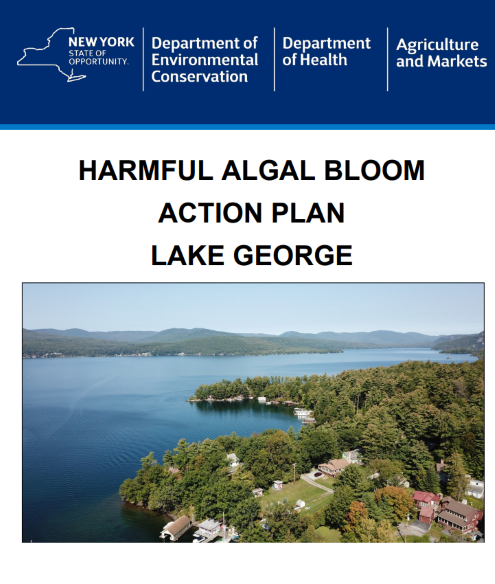
The state recently prepared an action plan for Lake George in regard to Harmful Algae Blooms (HAB’s).
Lake George was recently one of twelve New York lakes that was included in a study of harmful algae blooms. The 12 selected lakes represent a wide range of conditions, the goal was to identify factors that lead to Harmful Alage Blooms (HAB’s) in specific water bodies, and apply the information learned to other lakes facing similar threats. Each lake studied had an action plan prepared for that lake.
The good news from the report on Lake George:
“There have been no reported HABs in Lake George to date. Analyses conducted in this Action Plan provide insight into the processes that may potentially influence the formation of HABs in Lake George, and their possible spatial extents, durations, and intensities. Implementation of the mitigation actions recommended in this HABs Action Plan are expected to prevent the likelihood of blooms in Lake George.”
Additionally:
“Lake George is oligotrophic, rarely exhibits shoreline algal blooms, and there is no record of any HABs being observed or reported on the lake. Screening samples analyzed for algae, cyanobacteria, and algal toxin levels, including phycocyanin, and microcystin, by the State University of New York College of Environmental Science and Forestry (SUNY ESF) since 2012 found low overall algae levels and low cyanobacteria levels at each of the sampling sites (NYSDEC 2015). Cyanobacteria have been measured in benthic samples associated with Cladophora and other filamentous algae, but they have not comprised the major taxa in the phytoplankton community in these samples.”
However there is always room for more testing and vigilance:
“In summary, Lake George tends to have very low chlorophyll-a concentrations. However, there are some locations that tend to have consistently higher (though still low) chlorophyll-a concentrations relative to the rest of the lake (Figure 16). These locations include: Sandy Bay, Cotton Island, Basin Bay, Huletts Landing, Heart Bay, Weeds Bay, Asas Island, Lenni-Lenape Island, Arcady Country Cub, and the north end of the Lake around Prison Island. In these shallow areas the remote sensing might be picking other interferences as opposed to chlorophyll-a concentrations. Additional analysis may be of interest to investigate these locations further.”
The entire report for Lake George can be read here: https://www.dec.ny.gov/docs/water_pdf/georgehabplan.pdf
